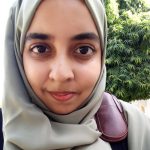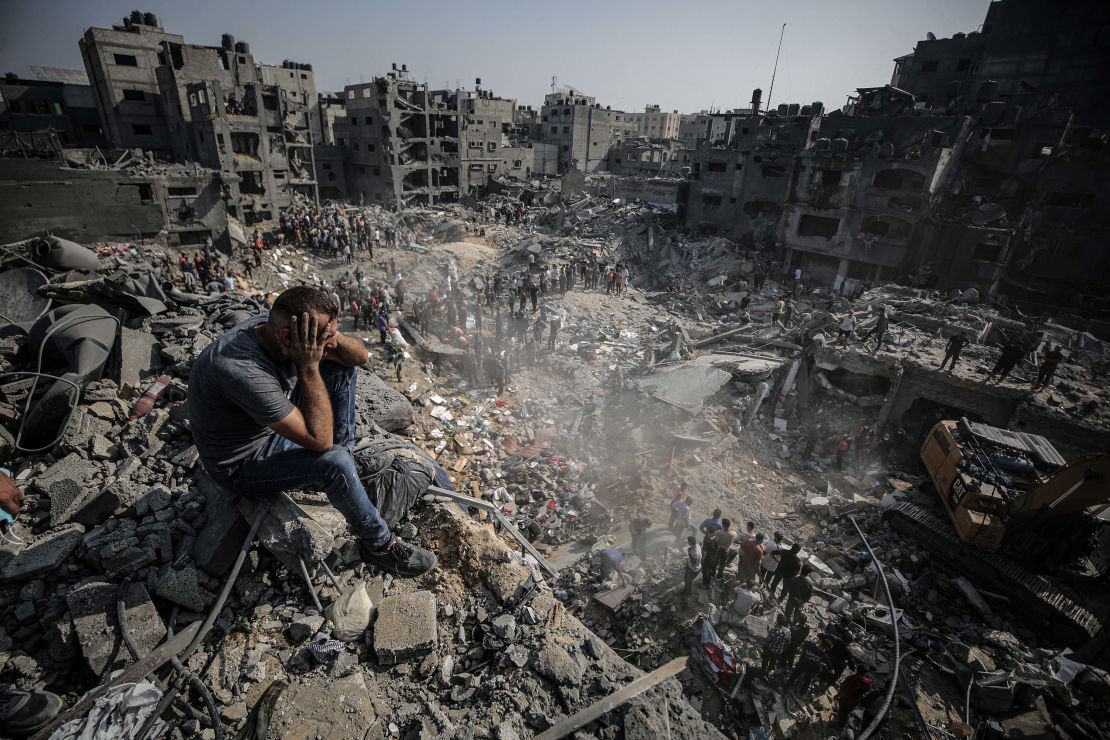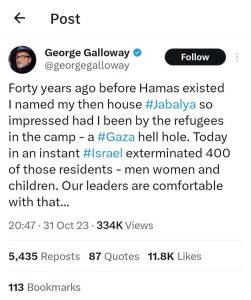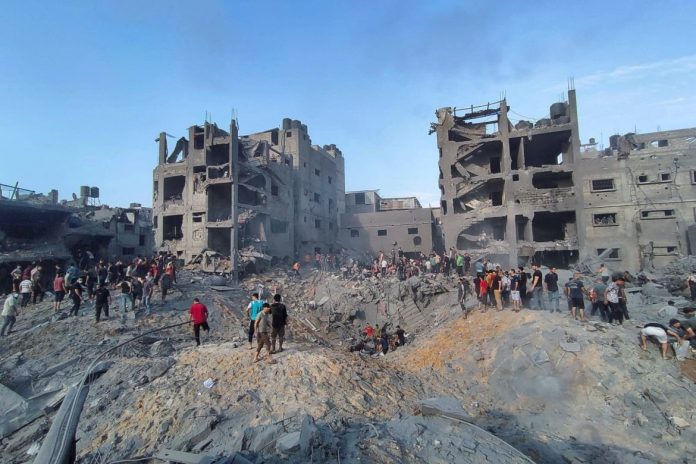There are many more stories of people who, despite growing up in one of the most densely packed refugee camps in the world, not just Gaza, have shaped their narratives and struggled for justice and the general uplift of humanity, whether through their social service, writing, political intervention across the spectrum or activism. But for Israeli forces, the media and the global powers-that-be, Jabalya is nothing more than a den of terrorists, one that ought to be flattened in an absurd quest for Hamas members

By Shayma S
“A Hamas terrorist was taken out of the debris, carried in his father’s arms. His face is covered with dust, his body jerking like a sack, his stare blank. It’s not clear if he’s alive or dead. He is a toddler of three or four, and his desperate father rushed him to the Gaza Strip’s Indonesian Hospital, which was already bursting with wounded and dead people.” – Gideon Levy, “These Are the Children Extracted After the Bombardment of Gaza’s Jabalya Refugee Camp,” Haaretz, Nov. 2, 2023
The Jabalya (alternatively spelled Jabaliya) Camp (مخيّم جباليا) is a site of history and witnessing. Established by the United Nations in the aftermath of the Nakba, it is now an urban setup located north of the Palestinian city Jabalya, near Gaza City. It is the largest refugee camp in the Gaza Strip, out of eight in total. With a rich history dating back to the 8th century CE, from when a cemetery was uncovered, to the discovery of Byzantine monasteries and ceramics, the region of Jabalya has been home to a diversity of cultures, languages and sites of religious importance. But in recent decades, it is known more for its camp, which has been the birthplace of many Palestinian leaders, doctors, writers and other intellectuals. It was also the birthplace of the First Intifada, after an Israeli lorry crashed into a vehicle carrying Palestinian workers in Jabalya refugee camp. This led to protest and shutdowns, 20 years after the first Arab-Israeli War in 1967.
For many, it has been a home despite its difficult origins. Many are displaced refugees from Palestinian cities that have been annexed by Israel, like Ashdod, Jaffa, Lod, Ramla and Be’er Sheva. Although it has grown from tents to an urban settlement, as it has survived and been home to more than 3 generations of Palestinians, it is densely crowded and has difficult living conditions.
According to a report in The National by Ismaeel Naar which cites UNRWA data, over 100,000 Palestinians are packed into a 1.4 square kilometer radius. This is only the number of registered refugees. All this, before Israeli forces bombed it multiple in the space of two days, allegedly to find Hamas commanders residing there. Former Israeli PM and lawyer Ehud Olmert told ABC News that “I am not certain that so many innocent civilians were killed yesterday. It was the headquarters of Hamas and everyone present there was part of Hamas… They were killed, but they were not innocent civilians to start with.” This was in addition to strikes close to the al-Quds hospital, where many Palestinians are sheltering. The strike on Jabalya severely damaged the Falluja neighborhood, causing deep craters.

As Shahd Abusalama, a UK based Palestinian activist-scholar, writer, and artist writes on her blog, “I am a third-generation refugee, born and raised in one of Palestine’s largest refugee camps, Jabalia, originally from Beit-Jerja village, my grandparents’ evergreen home which they had to flee under Israeli fire in 1948. I was born a survivor – my mother’s labor occurred during a curfew that Israeli military forces imposed on Jabalia… from which first intifada erupted a few years earlier. While fearing for her life and her yet-to-be-born child, she walked through Jabalia refugee camp’s alleys, leaning on my grandmother who held a white piece of cloth in one hand and a lantern in the other, hoping for mercy from the Israeli soldiers who were indoctrinated to shoot every moving being. Our family home then was one-kilometre away from the UNRWA clinic in Jabalia. There were no ambulances, no phones, and the whole neighbourhood was under blackout. “While pointing their guns at us, unscrupulous Israeli soldiers obstructed our way,” my mum recalled, “They harassed and interrogated us even though I could hardly stand”.”
Abusalama’s father spent 13 years in Israeli jails, and was originally sentenced to seven life terms plus ten years, but was released in the 1985 prisoner exchange after serving thirteen – “only” thirteen. Despite these impossible circumstances, Abusalama now holds a PhD on the historical representations of Palestinian refugees in Gaza, degrees from Al-Azhar and SOAS, London, and is a published author.
Atef Abu Saif, Fatah spokesman, incumbent Minister of Culture in the PA government, and author of A Suspended Life (2014), which was nominated for the Arabic Booker Prize, was also born in Jabalya. He now lives in Saftawi, near Jabalya, where he has lived most of his life. In his recollections of the current violence in Gaza, in the Washington Post, he wrote: “Jabalya is famous for its narrow alleys, but now they’re all blocked with fallen masonry, chunks of concrete, tangled metal. Standing on a pile of chaos that a few hours ago was someone’s home, I think about the neighbourhood where I was born and raised. I know it is maze of narrow streets by heart; I can navigate them with my eyes closed. Soon all that will be left will be a memory.”
Majed Abusalama describes himself in his Al Jazeera bio as “a PhD candidate in Palestine Research Group at Tampere University (Finland), policy analyst, and a writer…a refugee born and raised in Jabalia refugee camp in Gaza and…now based in Berlin.” He wrote in the publication on October 18th 2023, recalling his upbringing in the camp: “The only word I can think of that comes close to what I feel right now is “qahr” in Arabic; it is not just pain, anguish and anger. It is a feeling I was born with to a family of refugees in the Gaza Strip. My grandparents hailed from the village of Isdud (now Ashdod) and the village of Bayt Jirja, but were forced to settle in Jabalia refugee camp, just about 20km (12.4 miles) away from their homes.”
Dr Izzeldin Abuleish is a well-known name both in Palestine and beyond – Palestinian-Canadian who was born and raised in Jabalia, a Harvard-trained fertility specialist, the first Palestinian doctor to work in an Israeli hospital, a five-time nominee for the Nobel Peace Prize and the father of three daughters and the uncle of a niece – all of whom were killed more than 15 years ago when an Israeli tank blasted his home in Gaza. He went on to publish a memoir called I Shall Not Hate (2010) and went on to create the Daughters for Life Foundation, a charity to help women in the Middle East afford college. He tried to seek legal justice for his family, but the IDF claimed the incident was an accident, and his case was rejected by the Israeli Supreme Court two years ago.

There are many more stories of people who, despite growing up in one of the most densely packed refugee camps in the world, not just Gaza, have shaped their narratives and struggled for justice and the general uplift of humanity, whether through their social service, writing, political intervention across the spectrum or activism. But for Israeli forces, the media and the global powers-that-be, Jabalya is nothing more than a den of terrorists, one that ought to be flattened in an absurd quest for Hamas members.




